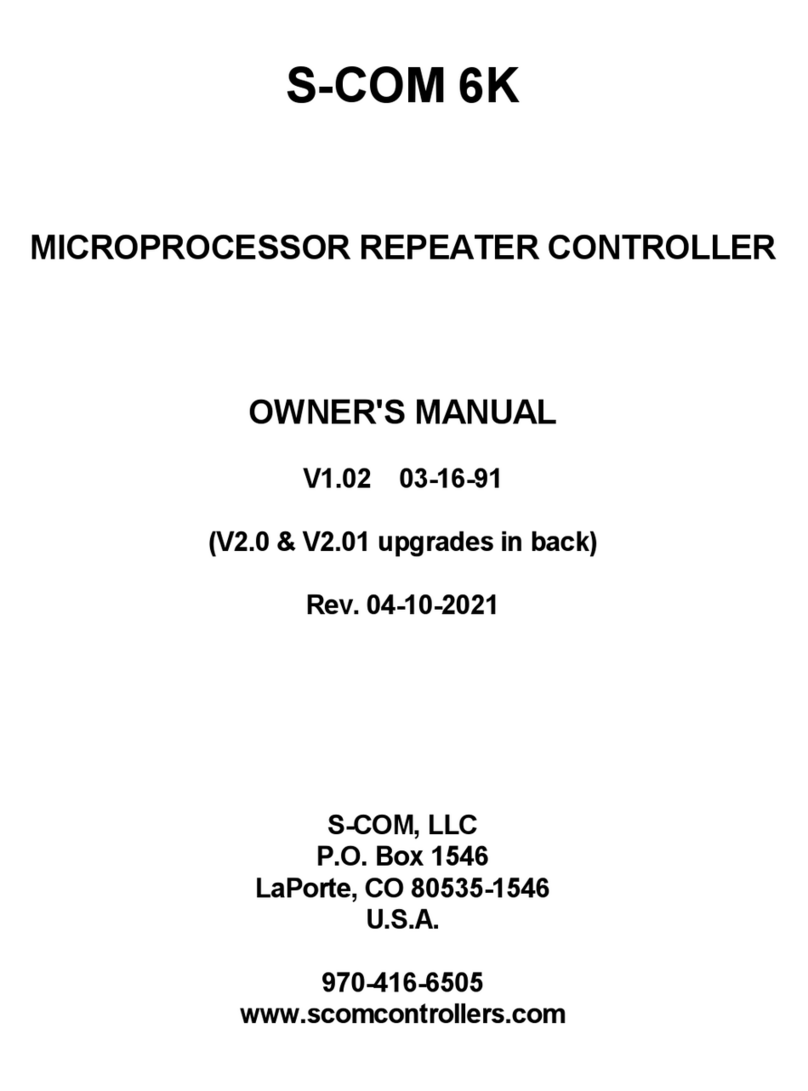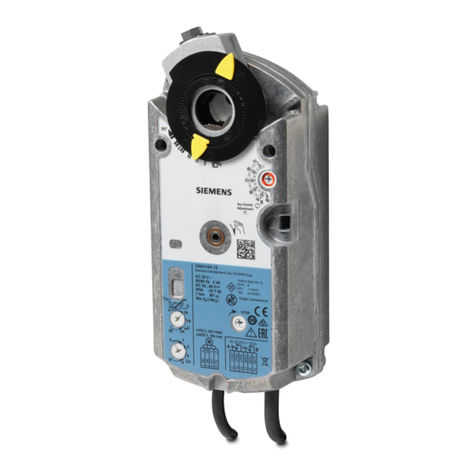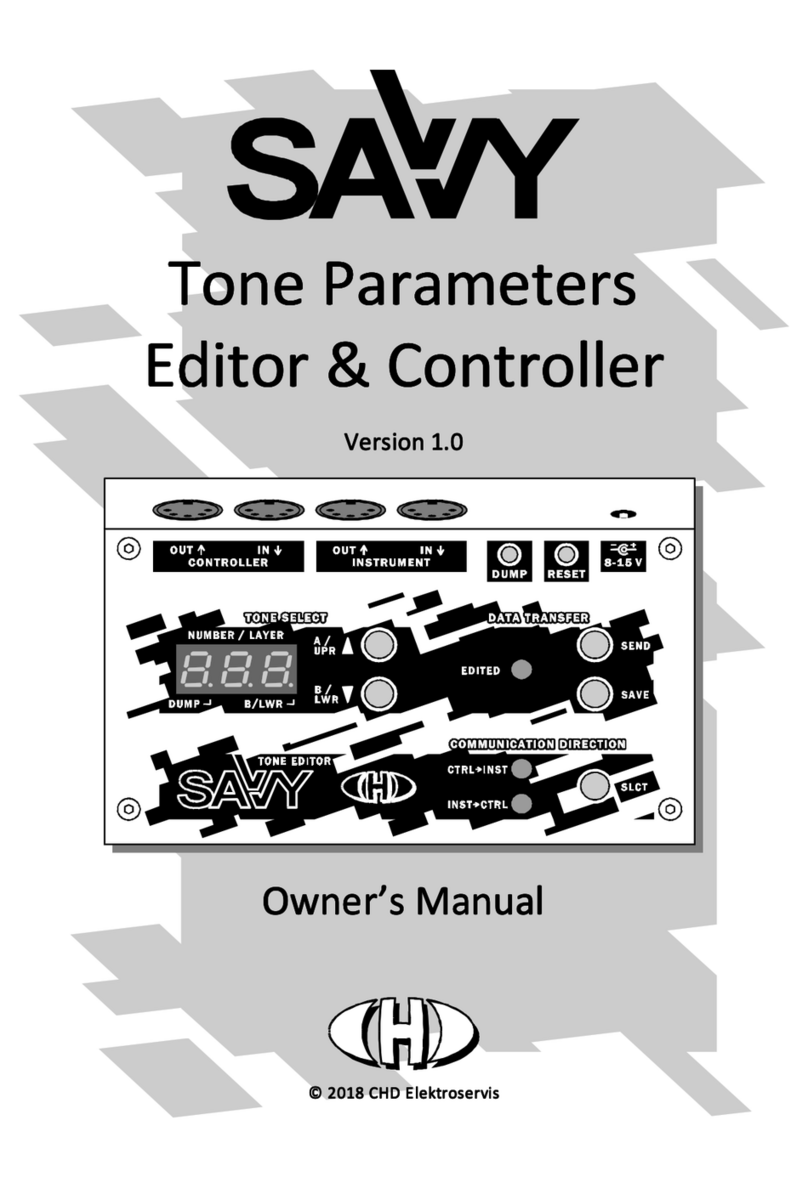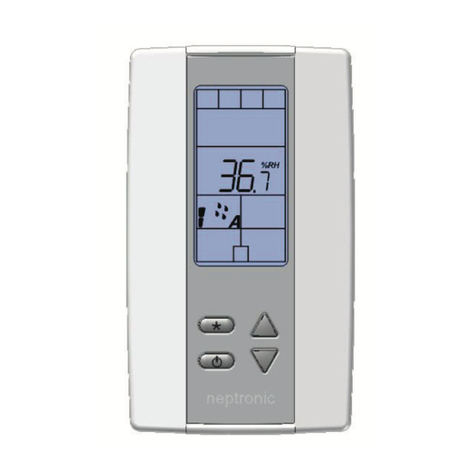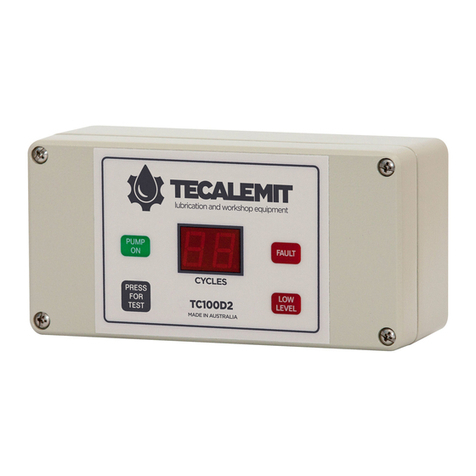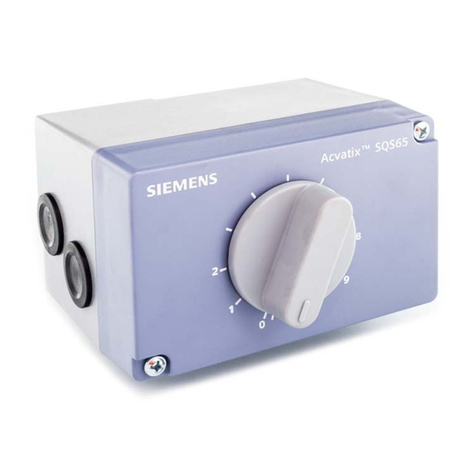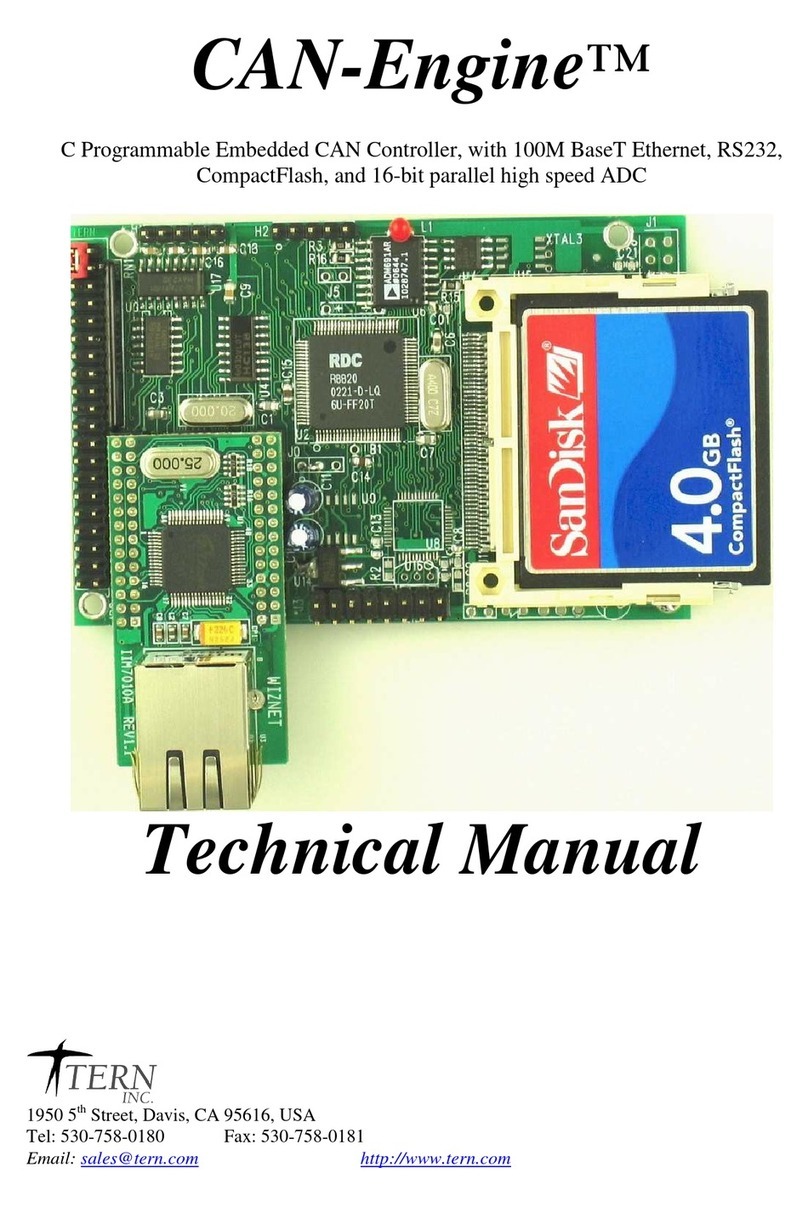S-COM 7K User manual

This manual Copyright 2000 by S-COM Industries, All Rights Reserved.
Except where otherwise noted, no part of this manual may be duplicated in any form,
whether electronic, mechanical, or otherwise.
Published in the United States of America by:
S-COM Industries
P.O. Box 1546
LaPorte, CO 80535-1546
USA

Limited Warranty
This warranty gives you specific legal rights, and you may also have other rights which vary from state
to state.
Coverage
Except as specified below, this warranty covers all defects in material and workmanship in this product.
The following are not covered by the warranty:
• Damage to, or deterioration of, the external cabinet.
• Damage resulting from lightning, accident, misuse, abuse, or neglect.
• Damage resulting from failure to follow instructions contained in the owner's manual.
• Damage occurring during shipment of the product (claims must be presented to the carrier).
• Damage resulting from repair or attempted repair by anyone other than S-COM Industries.
• Damage resulting from causes other than product defects, including lack of technical skill,
competence, or experience of the user.
• Damage to any unit which has been altered or on which the serial number has been de-
faced, modified, or removed.
Enforcement
This warranty may be enforced only by the original purchaser. The warranty is not transferrable.
Length Of Warranty
For both labor and parts, this warranty will be effective for one (1) year from the date of original
purchase.
What We Will Pay For
We will pay all labor and material expenses for items covered by the warranty. Payment of shipping
charges is discussed in the next section of the warranty.
How You Can Get Warranty Service
Your unit must be serviced by S-COM's Service Department. Please do not return your unit to the factory
without prior authorization. You must pay any shipping charges if it is necessary to ship the product to
service. However, if the necessary repairs are covered by the warranty, we will pay the return
shipping charges to any destination within the U.S. Whenever warranty service is required, you must
present the original dated invoice or a photocopy.
S-COM's liability for any defective products is limited to repair or replacement of the product, at S-COM's
option.
S-COM reserves the right to make any changes in design or additions to, or improvements in, its products
without any obligation to install such additions or improvements in equipment previously sold. S-COM
further reserves the right to replace defective parts under warranty with different or improved parts.
This warranty is expressly in lieu of all other warranties, expressed or implied, including any implied
warranty of merchantability or fitness, and of all other obligations of liabilities on the part of S-COM.


Table of Contents
v
Table of Contents
Selected Tables ...................................................................................................................... xiii
Product Description .......................................... 1-1
Standard Hardware Features.................................................................................................... 1-1
Configuration....................................................................................................................... 1-1
Cabinet................................................................................................................................ 1-1
Main Board.......................................................................................................................... 1-2
Optional Hardware Features ..................................................................................................... 1-2
Telephone Interface Module............................................................................................... 1-2
Speech Synthesis Module................................................................................................... 1-2
Audio Delay Module............................................................................................................ 1-2
Standard Software Features...................................................................................................... 1-2
CW Identifier....................................................................................................................... 1-2
CW Messages and Paging Formats................................................................................... 1-2
Timers................................................................................................................................. 1-3
Repeater Characteristics .................................................................................................... 1-3
Clock and Calendar ............................................................................................................ 1-3
Logic Inputs and Outputs.................................................................................................... 1-3
Command Language .......................................................................................................... 1-3
Getting Started................................................... 2-1
Power ON Initialization .............................................................................................................. 2-1
Initialize Controller............................................................................................................... 2-1
Cold Start............................................................................................................................ 2-2
Warm Start.......................................................................................................................... 2-2
Default Condition ................................................................................................................ 2-2
Programming Fundamentals............................ 3-1
Valid Digit and Time Detection.................................................................................................. 3-2
Control Command Structure...................................................................................................... 3-2
Example Control Command................................................................................................ 3-3
Command Response Messages............................................................................................... 3-4
Acknowledgment................................................................................................................. 3-4
Errors.................................................................................................................................. 3-4
Special Keys.............................................................................................................................. 3-5
Star (*) and Carrier Drop as Terminators............................................................................ 3-5
Pound (#) as Clear or Abort Key......................................................................................... 3-5
DTMF Interdigit Timer ............................................................................................................... 3-6
DTMF Mute Delay ..................................................................................................................... 3-6
Messages............................................................ 4-1
Message Buffer ......................................................................................................................... 4-1
Message Handler ...................................................................................................................... 4-1
Control Characters .................................................................................................................... 4-2
Routing and Unrouting Control Characters ............................................................................... 4-3
Default................................................................................................................................. 4-3
Examples............................................................................................................................ 4-4
Synchronizing Messages and Commands................................................................................ 4-5
CW Messages........................................................................................................................... 4-6
Control Character................................................................................................................ 4-6

7K •
vi
Format................................................................................................................................. 4-6
Pre-Message Delay Character............................................................................................ 4-6
Wordspace Character......................................................................................................... 4-6
Frequency Change.............................................................................................................. 4-6
Speed Change.................................................................................................................... 4-7
CW Alphanumeric Characters............................................................................................ 4-8
CW Punctuation and Related Characters........................................................................... 4-9
CW Frequency Change and Speed Change Characters.................................................. 4-10
Command: Enable/Disable CW ........................................................................................4-11
Command: Select Frequency of CW ................................................................................4-12
Command: Send Next Message Slowly ............................................................................4-13
Command: Select CW Speed ...........................................................................................4-14
Beep Messages....................................................................................................................... 4-16
Control Character.............................................................................................................. 4-16
Format............................................................................................................................... 4-16
Beep Parameters (General).............................................................................................. 4-16
Pre-Message Delay Character.......................................................................................... 4-16
Factory-Fixed-Frequency Beeps....................................................................................... 4-17
Owner-Fixed Frequency Beeps........................................................................................ 4-18
Command: Select Frequency of Owner-Fixed Frequency Beeps .....................................4-19
Custom Beeps .................................................................................................................. 4-21
Custom Beep Delay.......................................................................................................... 4-21
Beep Gap Change Characters.......................................................................................... 4-21
Beep Duration Change Characters................................................................................... 4-22
Automatic Beep Gap ON Character ................................................................................. 4-22
Automatic Beep Gap OFF Character................................................................................ 4-23
Defaults............................................................................................................................. 4-23
Single Tone Page Messages................................................................................................... 4-23
Control Character.............................................................................................................. 4-23
Format............................................................................................................................... 4-23
Delays............................................................................................................................... 4-23
Two-Tone Sequential Page Messages ................................................................................... 4-24
Control Character.............................................................................................................. 4-24
Format............................................................................................................................... 4-24
Delays............................................................................................................................... 4-24
Five/Six-Tone Page Messages ............................................................................................... 4-25
Control Character.............................................................................................................. 4-25
Format............................................................................................................................... 4-25
Delays............................................................................................................................... 4-25
DTMF Page Messages............................................................................................................ 4-26
Control Character.............................................................................................................. 4-26
Format............................................................................................................................... 4-26
Delays............................................................................................................................... 4-26
Defaults............................................................................................................................. 4-26
DTMF Characters ............................................................................................................. 4-27
DTMF Duration Change Characters................................................................................. 4-27
DTMF Custom Duration Change Characters.................................................................... 4-28
DTMF Gap Change Characters........................................................................................ 4-28
DTMF Custom Gap Change Characters .......................................................................... 4-28
DTMF Pause Characters.................................................................................................. 4-29
DTMF Custom Pause Characters..................................................................................... 4-29
DTMF Custom Changes (Duration • Gap • Pause) .......................................................... 4-30
DTMF-Related Notes........................................................................................................ 4-30
DTMF Character Set Tables Explained................................................................................... 4-31

Table of Contents
vii
Examples.......................................................................................................................... 4-31
Synthesized Speech Messages .............................................................................................. 4-33
Control Character.............................................................................................................. 4-33
Format............................................................................................................................... 4-33
Delay Character................................................................................................................ 4-33
Pause Character............................................................................................................... 4-33
Timeout Timer................................................................................................................... 4-33
Synthesized Speech Vocabulary....................................................................................... 4-33
Tone Codes............................................................................................................................. 4-33
Tone Code Table Explained ............................................................................................. 4-34
Calculating Tone Codes.................................................................................................... 4-34
Run-Time Variables................................................................................................................. 4-45
Command: Select Programmable Messages ..........................................................................4-37
Command: Review Programmable Messages ........................................................................4-40
Command: Select/Review/Play User Messages .....................................................................4-41
Command: Send Message ......................................................................................................4-42
Command: Select/Review Command Response Messages ...................................................4-44
Security............................................................... 5-1
Command: Assign Control Operator Password ........................................................................5-2
Command: Assign Master Password ........................................................................................5-3
Command: Assign Control Operator Priviledge Level ...............................................................5-4
Command: Assign Control Operator Priviledge Level to a Range of Commands......................5-5
Command: Enable/Disable Front Panel Display .......................................................................5-6
Macros................................................................ 6-1
Quantity of Macros .................................................................................................................... 6-1
Size of Macros........................................................................................................................... 6-1
Names of Macros...................................................................................................................... 6-2
Contents of Macros ................................................................................................................... 6-2
Sequence of Execution.............................................................................................................. 6-3
Cautions .................................................................................................................................... 6-3
Applications of Macros .............................................................................................................. 6-3
Command: Create New Macro ..................................................................................................6-5
Command: Append To Macro ...................................................................................................6-7
Command: List Macro in CW or Speech....................................................................................6-9
Command: Erase Macro .........................................................................................................6-11
Command: Erase All Macros ...................................................................................................6-12
Command: Rename Macro .....................................................................................................6-13
Command: Pause ....................................................................................................................6-15
Command: Select Power ON-Triggered Macro .......................................................................6-16
Telephone Interface Functions......................... 7-1
Autopatch................................................................................................................................. 7-2
Accessing the Autopatch .................................................................................................... 7-2
Store-and-Forward Operation............................................................................................. 7-2
Dumping the Autopatch ...................................................................................................... 7-3
Autopatch Setup and Configuration........................................................................................... 7-3
Autopatch Dialer ................................................................................................................. 7-3
Examples............................................................................................................................ 7-4
Autopatch Conversation Control......................................................................................... 7-4
Autopatch Dialing Mode ............................................................................................................ 7-5
Command: Select Autopatch Dialing Mode ........................................................................7-6

7K •
viii
Command: Select/Review Autopatch Dialing Message ......................................................7-7
Command: Select/Review Autopatch Error Messages .......................................................7-8
Command: Select/Review Autopatch Dump Message .......................................................7-9
Command: Enable/Disable Autopatch Dialing Mixed-Mode .............................................7-10
Command: Select Pause ("B") Digit Time ........................................................................7-11
Command: Enable/Disable Pound Down (# Dump) .........................................................7-12
Command: Select Dialing Prefix .......................................................................................7-13
Command: Dump Autopatch Using a Code ......................................................................7-15
Command: Select Autopatch Access- and Dump-Triggered Macro .................................7-16
Command: Enable/Disable Full-Duplex Mode ..................................................................7-17
Command: Enable/Disable Autopatch Privacy .................................................................7-18
Command: Enable/Disable Repeater-to-Phone DTMF Mute ...........................................7-19
Command: Enable/Disable ID Messages During Autopatch ............................................7-20
Command: Require Dump Before Next Call .....................................................................7-21
Command: Select Receiver-to-Autopatch-Triggered Macros ...........................................7-22
Command: Landline Hookflash .........................................................................................7-23
Autopatch Timeout Timer........................................................................................................ 7-24
Command: Select Autopatch Timeout Timer ....................................................................7-25
Command: Reset Autopatch Timeout Timer ....................................................................7-26
Command: Select/Review Autopatch Timeout Warning Message ...................................7-27
Autopatch Access and Passwords.......................................................................................... 7-28
Command: Access Autopatch (With Password) ...............................................................7-29
Command: Access Autopatch (Without Password) ..........................................................7-30
Command: Change Autopatch Access Password ............................................................7-32
Command: Enable/Disable Autopatch Access Without Password ...................................7-33
Command: Go Off-Hook ...................................................................................................7-34
Autopatch Call Types .............................................................................................................. 7-35
Command: Select Autopatch Call Types ..........................................................................7-36
Autopatch Restrictions............................................................................................................. 7-38
Uses of Autopatch Restrictions......................................................................................... 7-38
Command: Clear (or Enter) Accepted Number Table ......................................................7-40
Command: Clear (or Enter) Rejected Number Table .......................................................7-42
Autopatch Redialer.................................................................................................................. 7-44
Command: Redial Last Number .......................................................................................7-45
Command: Clear Autopatch Redialer ...............................................................................7-46
Autopatch Call Counter ........................................................................................................... 7-47
Command: Clear Autopatch Call Counter .........................................................................7-48
Command: Send Autopatch Call Count ............................................................................7-49
Phone Line Control Mode..................................................................................................... 7-50
Phone Line Busy Input............................................................................................................. 7-50
Phone Line Busy Output.......................................................................................................... 7-50
Phone Line Answer Modes...................................................................................................... 7-50
Ring-In Delay.................................................................................................................... 7-52
Ringout Limit..................................................................................................................... 7-52
Command: Select Phone Line Answer Mode ..........................................................................7-53
Command: Select (Review) Phone Line Answer Message .....................................................7-54
Command: Select Phone Line Answer Macro .........................................................................7-55
Command: Select Phone Line Dump-Triggered Macro ..........................................................7-56
Command: Select Phone Line Off-Hook Timer .......................................................................7-57
Command: Monitor/Talk Out Via Phone ..................................................................................7-58
Reverse Patch........................................................................................................................ 7-59
Command: Trigger Reverse Patch ..........................................................................................7-60
Command: Answer Reverse Patch .........................................................................................7-61

Table of Contents
ix
Command: Select (Review) Reverse Patch Ringout Message ...............................................7-62
Command: Select Reverse Patch Ring-Triggered Macro .......................................................7-63
Multiple Port Access ............................................................................................................ 7-64
Autopatch Audio Routing ........................................................................................................ 7-65
Autopatch Command Response Message Routing ............................................................... 7-65
Receiver-Specific Autopatch Access ...................................................................................... 7-66
Preventing Multiple Accesses ................................................................................................. 7-66
Command: Select Receiver-Specific Access-Triggered Macros .............................................7-67
Command: Select Command Response Message Routing ....................................................7-68
Clock and Calendar........................................... 8-1
Command: Set Clock and Calendar ..........................................................................................8-2
Command: Adjust Daylight Savings Time .................................................................................8-4
Command: Reset Clock Seconds .............................................................................................8-6
Command: Adjust Clock Seconds .............................................................................................8-7
Scheduler ........................................................... 9-1
Command: Create Setpoint .......................................................................................................9-2
Scheduler Day Code Table ....................................................................................................... 9-3
Command: Delete One or More Setpoints ................................................................................9-6
Command: Enable/Disable Scheduler ......................................................................................9-7
CTCSS Functions ............................................ 10-1
Command: Enable/Disable CTCSS Encoder ..........................................................................10-2
Command: Select Frequency of CTCSS .................................................................................10-3
TS-32 Programming Table ..................................................................................................... 10-4
DTMF Decoder ................................................. 11-1
Command: Enable/Disable Command Response Messages .................................................11-2
Command: Select DTMF Priority/Scan ...................................................................................11-3
Command: Select DTMF Decoder Access Mode ...................................................................11-5
Command: Select DTMF Decoder Interdigit Timer .................................................................11-7
Command: Select DTMF Decoder Mute Delay .......................................................................11-8
Command: Enable/Disable DTMF Decoder Mute ...................................................................11-9
Command: Enable/Disable DTMF Long Tones .....................................................................11-10
Command: Select DTMF Long Tone Macros ........................................................................11-11
Command: Select DTMF Digit-Decoded Macro ....................................................................11-12
Identifier ........................................................... 12-1
Command: Select (or Review) Identifier Messages ................................................................12-3
Command: Select ID-Triggered Macros ..................................................................................12-4
Command: Select ID Message Interval ...................................................................................12-5
Command: Select ID Pending Interval ....................................................................................12-6
Command: Reset Initial ID Message To Normal .....................................................................12-7
Command: Send Initial ID Message ........................................................................................12-8
Command: Select Programmable Tail Messages for Tx1 ......................................................12-9
Command: Select/Review Initial and Normal ID Tail Message .............................................12-10
Command: Enable/Disable ID Messages During Autopatch .................................................12-11
Links................................................................. 13-1
Command: Enable/Disable Path .............................................................................................13-2
Command: Select Audio Routing Priority ................................................................................13-3
Command: Select Path Access Mode .....................................................................................13-4

7K •
x
Logic Inputs ..................................................... 14-1
Command: Assign Macro To Logic Input ................................................................................14-2
Logic Outputs .................................................. 15-1
Command: Select Logic Outputs .............................................................................................15-2
Receiver Functions.......................................... 16-1
Command: Select Receiver Activity-Triggered Macros
Command: Select Receiver Post-Activity Timers ....................................................................16-2
Command: Select COR Pulse-Triggered Macro
Command: Select Pulse Parameters ......................................................................................16-4
Command: Enable/Disable End-of-Transmission Command Execution .................................16-6
Command: Select From-Start-of-Transmission Timer ............................................................16-8
Transmitter Functions..................................... 17-1
Transmitter Tail Sequence ..................................................................................................... 17-1
Courtesy Delay and Courtesy Message ........................................................................... 17-1
Dropout Delay and Dropout Message .............................................................................. 17-1
Transmitter Timeout Timer and Timeout Message ......................................................... 17-1
Transmitter Unkey Delay ................................................................................................. 17-2
Command: Select Courtesy Delay ..........................................................................................17-3
Command: Select Dropout Delay ............................................................................................17-4
Command: Select Transmitter Timeout Timer ........................................................................17-5
Command: Reset Transmitter Timeout Timer .........................................................................17-7
Command: Enable/Disable Transmitter ..................................................................................17-8
Command: Key Transmitter (Timed) .......................................................................................17-9
Command: Key Transmitter (Untimed) .................................................................................17-10
Command: Enable/Disable Transmitter Minimum Unkey Delay ...........................................17-11
Command: Select Transmitter Minimum Unkey Delay .........................................................17-12
Command: Select Receiver-to-Transmitter-Triggered Macros .............................................17-13
Command: Select Transmitter PTT-Triggered Macros .........................................................17-14
Repeater Functions......................................... 18-1
Command: Select Repeater Access Mode (Path 1) ................................................................18-2
Command: Select Repeater Activity-Triggered Macros
Command: Select Repeater Activity Counter/Timer ................................................................18-4
Command: Select Anti-Kerchunker Parameters .....................................................................18-6
Command: Select Anti-Kerchunk No Hangtime Mode ............................................................18-8
Command: Select (Review) Courtesy Messages ....................................................................18-9
Command: Select Repeater Action-Triggered Macros .........................................................18-11
Base Station Functions................................... 19-1
Command: Enable/Disable Star/Pound Talkout ......................................................................19-2
Command: Select Talkout Transmitter Mode ..........................................................................19-4
Command: Enable/Disable Command Execution on Interdigit Timer .....................................19-5
User Timers ..................................................... 20-1
Command: Select Timeout Value ............................................................................................20-2
Command: Select Timer Event Macro ....................................................................................20-3
Command: Stop Timer ............................................................................................................20-4
Command: Start Timer (Retriggerable) ...................................................................................20-5
Command: Start Timer (One-Shot) .........................................................................................20-6
Example: Fan Control .......................................................................................................20-7
Example: An Activity Timer ...............................................................................................20-8

Table of Contents
xi
Remote Base Interface ................................... 21-1
Remote Base Setup and Configuration ...................................................................................21-2
Wiring ................................................................................................................................21-2
Switch Setting ...................................................................................................................21-2
Software Configuration .....................................................................................................21-2
Event-Triggered Macros ...................................................................................................21-3
Command: Assign Remote Base Password .....................................................................21-4
Command: Select Remote Base Access- and Dump-Triggered Macros .........................21-5
Command: Select (Review) Remote Base Off Message ..................................................21-6
Command: Reset RBI-1 ....................................................................................................21-7
Command: Enable/Disable Access to the Remote Base ..................................................21-8
User Functions: Controlling the Radios ................................................................................ 21-10
Defining Memory Channels using Macros ..................................................................... 21-11
User Function: Accessing the Remote Base ................................................................. 21-12
User Function: Dump Remote Base .............................................................................. 21-13
User Function: Speak Radio Configuration ................................................................... 21-14
User Function: Select Memory Channel and Band ........................................................ 21-16
User Function: Select VFO Frequency and Offset ........................................................ 21-17
User Function: Select Transmitter Offset ...................................................................... 21-19
User Function: Enable/Disable Transmitter ................................................................... 21-20
User Function: Enable/Disable Receiver ....................................................................... 21-21
User Function: Enable/Disable Radio Power ................................................................. 21-22
User Function: Select Transmitter Power Output .......................................................... 21-23
User Function: Select Frequency of CTCSS ................................................................. 21-24
User Function: Enable/Disable CTCSS Encoder ........................................................... 21-25
User Function: Enable/Disable CTCSS Decoder .......................................................... 21-26
Macro Function: Send Queued Settings ........................................................................ 21-27
RBI-1 User Function Outputs ............................................................................................... 21-28
Command: Select RBI-1 Number of User Function Outputs ..........................................21-29
User Function: Select Individual RBI-1 User Function Outputs ......................................21-30
User Function: Enter RBI-1 User Function Output Group ..............................................21-31
Programming Tables......................................... A-1
CW Character Set Tables ........................................................................................................ A-2
Beep Character Set Tables...................................................................................................... A-4
DTMF Character Set Tables .................................................................................................... A-7
Synthesized Speech Vocabulary (Male) ................................................................................ A-10
Synthesized Speech Vocabulary (Female and Sound Effects) ............................................. A-15
Message Run-Time Variables................................................................................................ A-16
Message Control Characters ................................................................................................. A-17
Scheduler Day Code Table .................................................................................................... A-18
Tone Code Table.................................................................................................................... A-19
Root Numbers (Commands) by Number ............................................................................... A-22
Event Macros by Number ...................................................................................................... A-24
Messages by Number ............................................................................................................ A-27
Tenth-Second Timers by Number ......................................................................................... A-29
Tenth-Minute Timers by Number ........................................................................................... A-29
Path Access Mode by Number .............................................................................................. A-29
Software Switches by Number .............................................................................................. A-30
Command Quick Reference................................................................................................... A-32
Application Notes .............................................. B-1
Using the 7K as a Beacon Controller ....................................................................................... B-1
Positive Voltage TX Keying Circuit........................................................................................... B-3

7K •
xii
Installation.......................................................... C-1
Theory of Operation.................................................................................................................. C-1
Pre-Programming .............................................................................................................. C-1
Default Information............................................................................................................. C-1
Power Supply..................................................................................................................... C-1
Repeater Interfacing .......................................................................................................... C-2
Control Receiver Interfacing .............................................................................................. C-2
External Device Interfacing................................................................................................ C-2
Audio Gating ...................................................................................................................... C-2
Tone Generation................................................................................................................ C-2
Memory Protection............................................................................................................. C-3
Cables ...................................................................................................................................... C-3
Repeater Receiver COR........................................................................................................... C-3
Repeater Transmitter PTT ....................................................................................................... C-5
Repeater Receiver Audio ......................................................................................................... C-6
Repeater Transmitter Audio..................................................................................................... C-7
Repeater CTCSS Decoder....................................................................................................... C-8
Control Receiver COR.............................................................................................................. C-9
Control Receiver Audio........................................................................................................... C-10
DC Power............................................................................................................................... C-10
Logic Inputs............................................................................................................................ C-11
Logic Outputs ......................................................................................................................... C-11
Telephone Line Connection.................................................................................................... C-12
FCC Part 68 Rules........................................................................................................... C-13
Input and Output Connectors ................................................................................................. C-15
Audio Level Potentiometers.................................................................................................... C-16
Message Level Potentiometers.............................................................................................. C-17
DIP Switches.......................................................................................................................... C-18
Testing The Controller-To-Repeater Transmitter Interface.................................................... C-18
Testing The Controller-To-Repeater Receiver Interface........................................................ C-19
Testing The DTMF Decoder................................................................................................... C-19
Command Sources.......................................................................................................... C-20
Local Control.................................................................................................................... C-20
Performing the Tests ....................................................................................................... C-20
Falsing ............................................................................................................................. C-21
Real-Time Clock..................................................................................................................... C-21
Parts Lists and Schematics.............................. D-1
Controller Main Board .............................................................................................................. D-1
Speech Synthesizer Module (SSM) ....................................................................................... D-10
Telephone Interface Module (TIM) ........................................................................................ D-13
Audio Delay Module (ADM) ................................................................................................... D-17

Table of Contents
xiii
Selected Tables
A
Autopatch Call Types .........................................................................................7-35
B
Beep Duration Change Characters ......................................................... 4-22, A-5
Beep, Factory-Fixed Frequency ............................................................. 4-17, A-4
Beep Gap Change Characters .............................................................. 4-21, A-5
Beep, Owner-Fixed Frequency .............................................................. 4-18, A-4
Beep Parameters (General) .................................................................. 4-16, A-6
C
Command Quick Reference ............................................................................... A-33
Connectors, Input and Output .............................................................................C-15
CW Alphanumeric Characters ................................................................. 4-8, A-2
CW Frequency and Speed Changes ...................................................... 4-10, A-3
CW Punctuation and Related Characters .................................................. 4-9, A-3
CW Speed .......................................................................................................4-13
D
DTMF Characters .............................................................................. 4-27, A-7
DTMF Custom Changes (Duration • Gap • Pause) ..................................... 4-30, A-9
DTMF Decoder Access Mode ..............................................................................11-5
DTMF Duration Change Characters ....................................................... 4-27, A-7
DTMF Gap Change Characters ............................................................. 4-28, A-8
DTMF Pause Characters ..................................................................... 4-29, A-8
E
Event Macros by Number ................................................................................... A-24
M
Message Control Character Definitions 4-3, A-17
Message Run-Time Variables ............................................................... 4-35, A-16
Messages by Number ....................................................................................... A-27
P
Potentiometers, Audio Level ...............................................................................C-16
Potentiometers, Message Level ...........................................................................C-17
Parts • Audio Delay Module (ADM) .......................................................................D-17
Parts • Controller Main Board ................................................................................D-1
Parts • Speech Synthesizer Module (SSM) .............................................................D-10
Parts • Telephone Interface Module (TIM) ..............................................................D-13
Path Access Mode by Number ............................................................................ A-29
R
Root Numbers (Commands) by Number ................................................................ A-22

7K •
xiv
S
Scheduler Day Code Table ..................................................................... 9-3, A-18
Switches, Software, by Number ........................................................................... A-30
Switches, DIP ..................................................................................................C-18
Synthesized Speech Vocabulary (Female Voice and Sound Effects) ............................ A-15
Synthesized Speech Vocabulary (Male Voice) ........................................................ A-10
T
Tail Messages ................................................................................................12-10
Telephone Line Suppressors Market Sources .........................................................C-13
Timers, Tenth-Minute, by Number ........................................................................ A-29
Timers, Tenth-Second, by Number ....................................................................... A-29
Tone Code Table ............................................................................................. A-19
TS-32 Programming ..........................................................................................10-4

Product Description
1-1
Chapter 1
Product
Description
The S-COM 7Kis a high-quality, compact, microprocessor-based repeater
controller intended for use in amateur radio and commercial installations.
Incorporating advanced hardware and software designs, the 7K provides most-
often-needed control functions and powerful new features not found in any
comparably priced controller.
•The 7K is fully remotely programmable via DTMF commands over the
telephone or receiver ports—eliminating the inconvenience of returning
EPROMs, microcontroller ICs, and boards to the factory for reprogramming.
•No jumpers of diodes are needed for programming.
•Data is retained in non-volatile memory, ensuring that no information is lost
during power outages, making extra trips to the repeater site unnecessary.

7K •Chapter 1
1-2
Standard Hardware Features
Configuration
The standard 7K controller package consists of a main board mounted in a
mainframe cabinet, a set of mating connectors, and a manual. No options are
required to perform the most-often-needed repeater control functions.
Cabinet
The standard cabinet provides mounting for the main board and for optional
boards, and can be installed in a standard 19"wide equipment rack. The
cabinet is constructed of three parts: An iridite-plated chassis box, an iridite-
plated chassis cover, and a black front panel. The complete assembly is only 1-
3/4"high and 7"deep, allowing installation in any rack (including slim Motorola
racks).
Main Board
The 7K Main Board measures 6"deep by 9-3/4"wide, and can operate as a
stand-alone controller. The digital portion of the board contains the
microprocessor, memory, logic input/output, and real-time clock circuits. The
analog portion contains the DTMF encoder/decoder, audio crosspoint switch,
tone synthesis, and audio interface circuits. Three connectors (two DB25S and
one 2.5-mm power jack) are mounted on the main board. These connectors
protrude through cutouts in the rear of the cabinet, making the interior of the
cabinet free of wiring.
Optional Hardware Features
Telephone Interface Module
The Telephone Interface Module (TIM) is constructed on a 3"by 6"PC board,
and adds autopatch, reverse patch, and phone line control capabilities to the
7K. The module is registered with the FCC under Part 68 Rules, eliminating the
need for a separate telephone coupler. Transient protection and RFI filtering
are provided. All solid-state design eliminates mechanical relays. Built-in
electronic hybrid allows both half-duplex and full-duplex autopatch calls.
Supports both regenerated DTMF dialing and 10/20 PPS rotary dialing.
Speech Synthesis Module
The Speech Synthesis Module (SSM) is constructed on a 3"by 6"PC board,
and adds convenient, high-quality speech message capabilities to the 7K. The
SSM has its own microprocessor for controlling the speech synthesizer,
supplied with a large vocabulary. A third-order lowpass filter smooths analog
output of the synthesizer IC.

Product Description
1-3
Digital Audio Delay Module
The Digital Audio Delay Module (DADM) is constructed on a 2.1"by 2.7"PC
board, and removes squelch noise bursts and DTMF tone bursts from repeated
audio. As many as two DADMs may be installed in the cover of the 7K cabinet,
one each for receiver #1 and receiver #2. The DADM delays the audio from 12
to 197 milliseconds, adjustable via a dip switch.
Standard Software Features
CW Identifier
The software CW Identifier stores remotely-programmable multiple callsigns
with ID tail messages. Time between identifications is also programmable. CW
is internally mixed with repeat audio. The ID-er is polite, and attempts to
identify during breaks between transmissions.
CW Messages and Paging Formats
Most of the CW Messages are remotely programmable. CW pitch and speed
are programmable, and can be changed within a message. The character set
includes alphanumerics, punctuation, and a large library of “Beeps.” CW level
is set with a potentiometer.
The 7K supports the following paging formats: Single-tone (group call), two-
tone sequential, 5/6-tone, and DTMF. Pages may be stacked for convenient
call-up of ARES members, weather spotters, DX club members, on-the-air
meetings, etc.
Timers
All timers in the 7K are derived from the microprocessor's crystal-controlled
clock circuit for improved accuracy over other methods. Most timers are
remotely programmable, including: Courtesy Delay, Dropout Delay, Transmitter
Timeout, and Autopatch Timeout.
Repeater Characteristics
The character of a repeater can be varied with choices of Courtesy Messages,
Dropout Messages, Timeout Messages, and their associated timers. The
repeater can be placed into one of several access modes, or disabled.
Repeater characteristics can be changed by either a command or a transition
on one of the logic inputs.

7K •Chapter 1
1-4
Clock and Calendar
Time and date information may be obtained by inserting one or more Run-Time
Variables into any programmable message. CW readout is available from the
main board. Male and female voice readout is available if the optional SSM
board is installed.
A 100-setpoint Scheduler executes commands at programmable times and
dates.
Logic Inputs and Outputs
Logic inputs are used to detect a change of state in monitored devices at the
repeater site. Logic outputs can be manipulated by command to pulse or latch
a controlled device at the site.
Command Language
Commands are given to the 7K with an easy-to-use DTMF language. Security
is enhanced with a Password (PW) system, as well as programmable
restrictions on DTMF decode operation. A library of Macros may be defined for
repeater users. Macros may be created, deleted, renamed, and modified at any
time by authorized programmers.

Getting Started
2-1
Chapter 2
Getting Started
In this section, we will assume that you have either completed the installation
of the controller into the repeater, or you are simulating a repeater with
switches for COR signals, LEDs for PTT loads, and so on. To perform the
installation of your new controller, see the Installation appendix on page C-1.
If desired, the controller can be programmed on your workbench, then moved
to the repeater site for installation.
Note: Be sure to transport the controller in anti-static packing material. Large
electrostatic discharges can damage components and destroy the data stored
in memory.
Power ON Initialization
Initialize Controller
Each time power is applied to the controller, it will check to see if the Initialize
Push- Button is being pressed. (The initialize push-button is located in the right
rear corner of the main board.) At that moment, the controller will decide
whether to retrieve default information stored in the EPROM and write it into
the non-volatile RAM (push-button DOWN), or retain the previously-stored
information (push-button UP)
Note: If the initialize push-button is pressed at any other time, it will have no
effect. Likewise, since a specific sequence is needed to initialize your
controller, accidental contact with the push-button will not destroy your
programming efforts.
Controllers are initialized as part of the testing procedure at the factory.
However, we recommend that you do another initialization before attempting to
program the controller.

7K •Chapter 2
2-2
There may be other occasions when you will need to initialize the controller.
Some examples follow:
• The programming password was never written down, and was forgotten by
the programmer.
• A general erasing of all programming is desired, since the controller is being
transferred to a new repeater and will receive all new programming.
• You are installing a new software upgrade EPROM.
• It has been necessary to replace the battery, RAM IC, RAM controller IC, or
some other part in the non-volatile RAM circuit.
• In this last case, you must perform the initialization sequence twice to
ensure proper operation of the RAM controller IC.
To initialize the controller, follow these four steps:
• Remove power from the controller. This can be done by pulling out the 2.5
mm DC power plug.
• Press and hold down the initialize push-button.
• While holding down the push-button, restore power to the controller. This
can be done by inserting the 2.5 mm DC power plug.
• Continue holding down the push-button for several seconds after the power
has been restored.
Cold Start
An initialization is sometimes called a cold start. When a cold start occurs, the
controller will send ? RES C (reset, cold) in CW.
Warm Start
Applying power without doing an initialization is sometimes called a warm start.
When a warm start occurs, the controller will send ? RES (reset) in CW.
Default Condition
After an initialization, the controller's programming is in the Default Condition.
Default conditions are necessary if you want the controller to be able to operate
the repeater before you’ve had a chance to program it. An initialization can
therefore be though of as a quick pre-programming of the controller. Most
commands have default conditions. They remain in effect until you change
them through programming. The default conditions are described with the
commands in this manual.
Note: There is a push-ON jumper in the main board which is used to
disconnect the battery from the RAM IC. This jumper is removed during some
repair operations, and during current drain tests. Removing this jumper will not
initialize the controller. Removing and replacing the jumper will require an
initialization sequence before proper operation will resume
Table of contents
Other S-COM Controllers manuals
Popular Controllers manuals by other brands

Fuji Electric
Fuji Electric micrex-sx SPH user manual
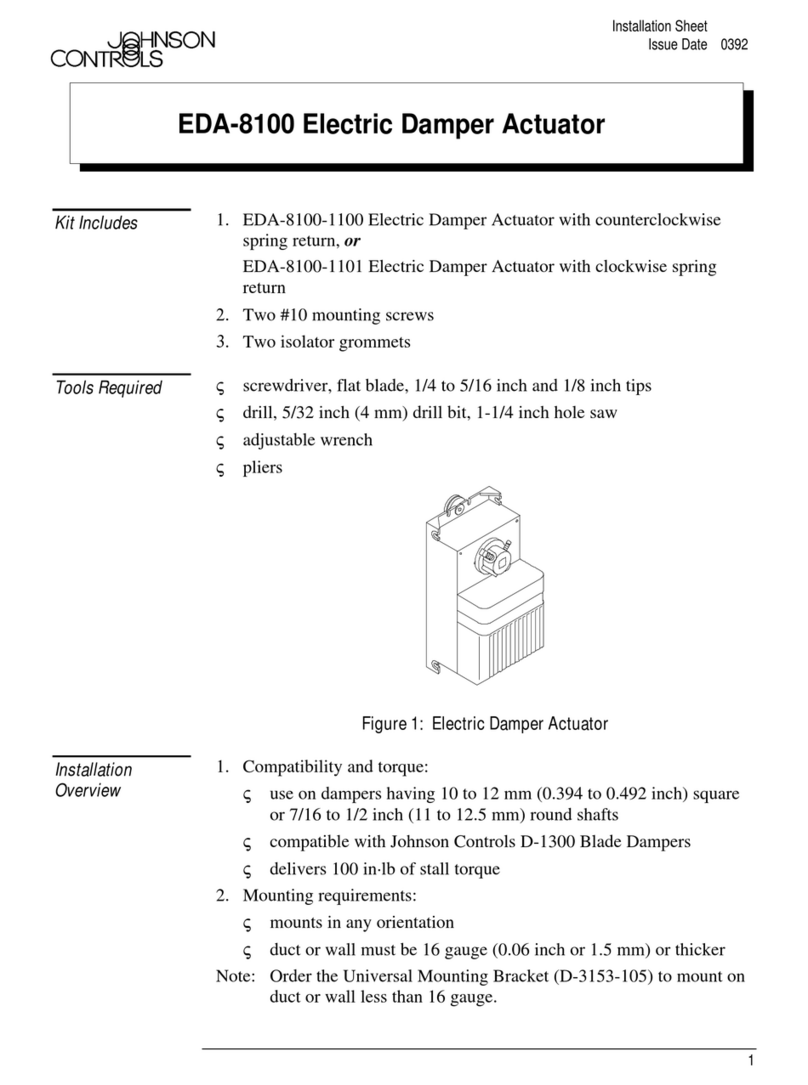
Johnson Controls
Johnson Controls EDA-8100 Installation sheet

Muller Elektronik
Muller Elektronik SPRAYER-Controller Orchard/Vineyard MIDI 3.0 Installation and operating instructions

Advantech
Advantech UNO-2182 user manual
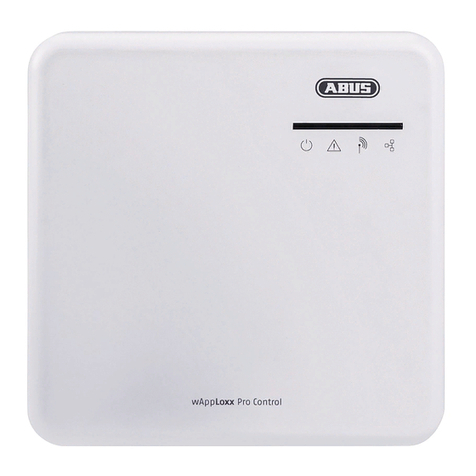
Abus
Abus wAppLoxx Pro Installation and operating instructions
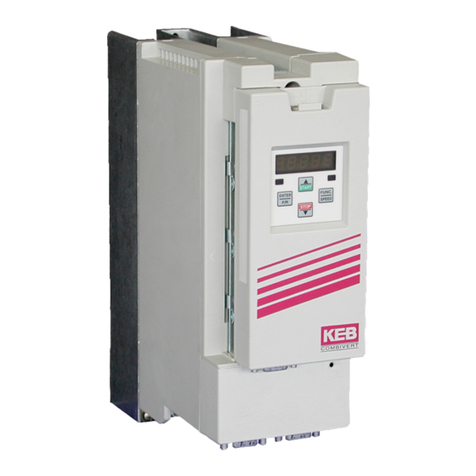
KEBCO
KEBCO COMBIVERT F5 installation manual
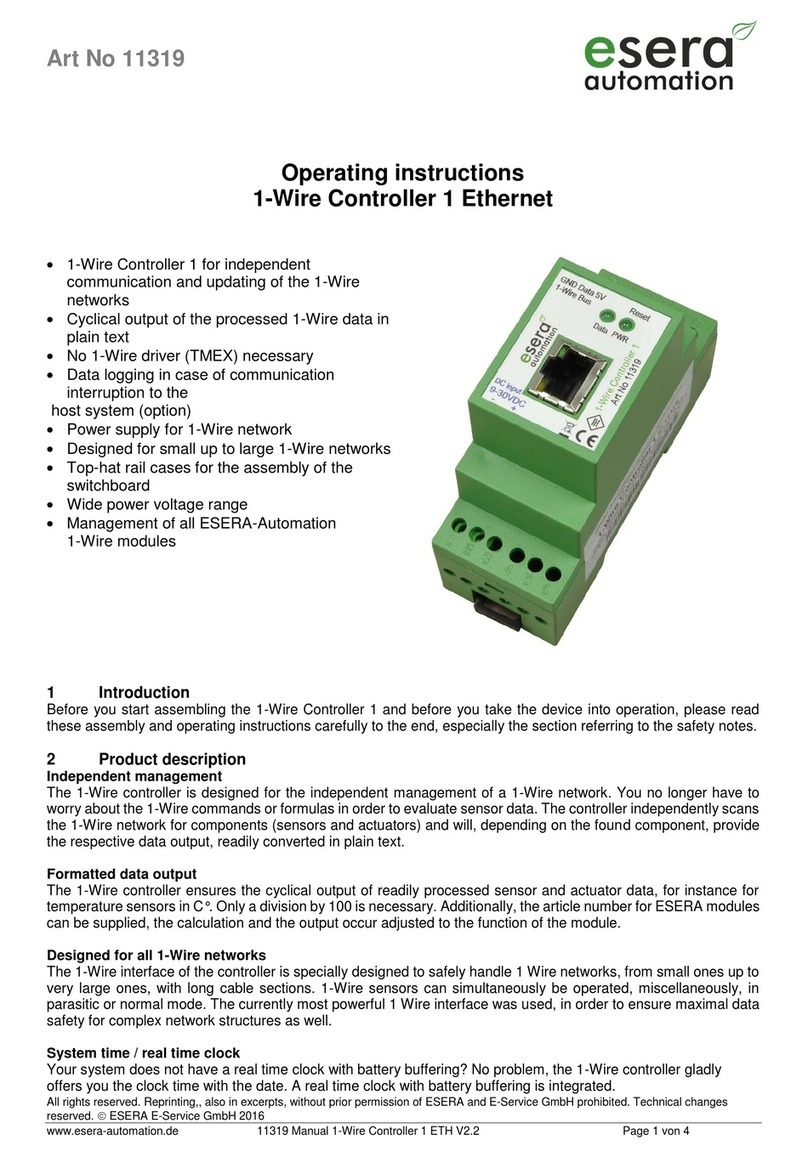
esera automation
esera automation 11319 operating instructions
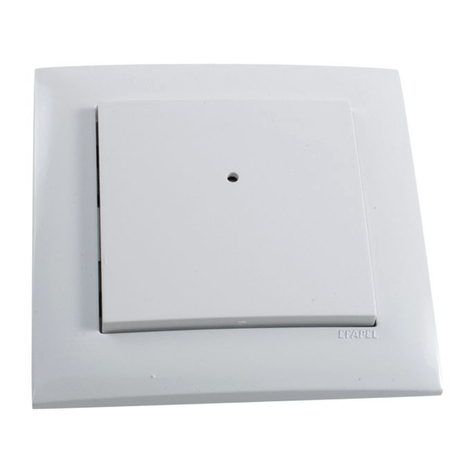
iNels
iNels RFWB-20/G quick start guide
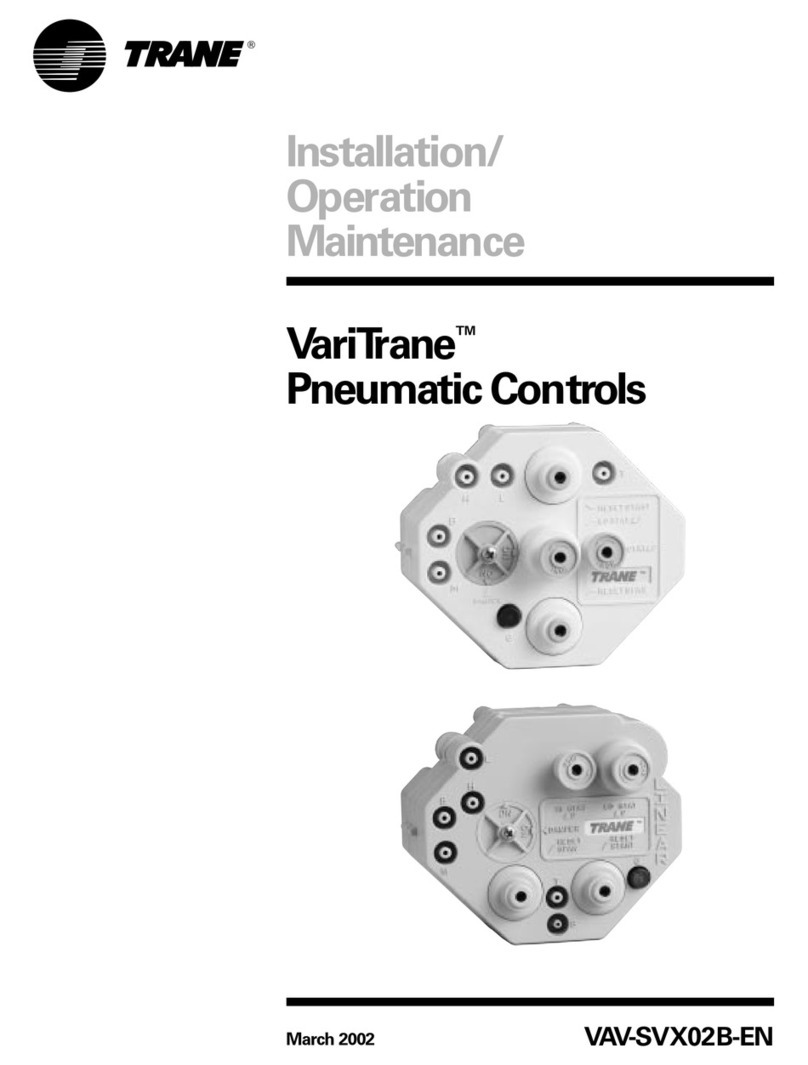
Trane
Trane VariTrane VAV-SVX02B-EN Installation operation & maintenance
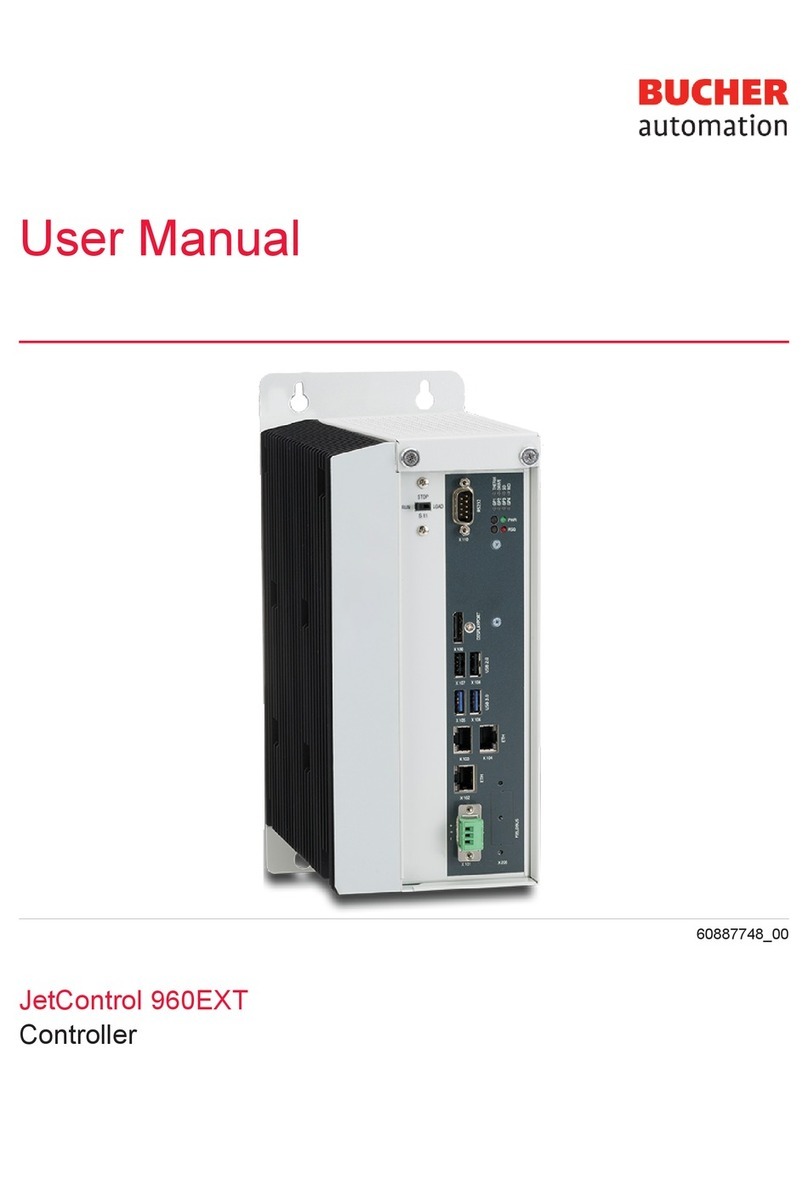
Bucher
Bucher JetControl 960EXT user manual
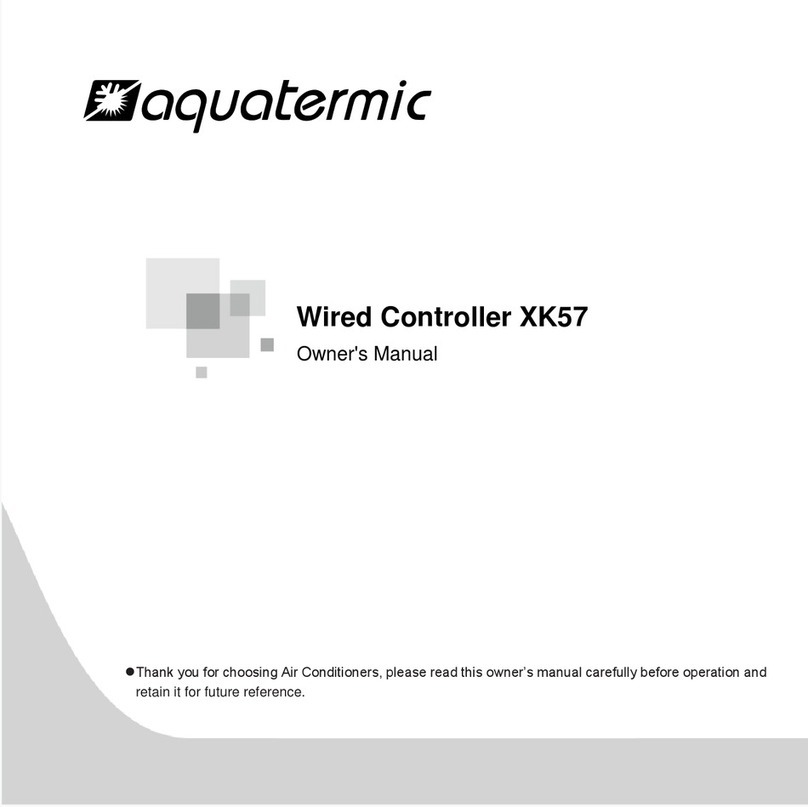
aquatermic
aquatermic XK57 owner's manual
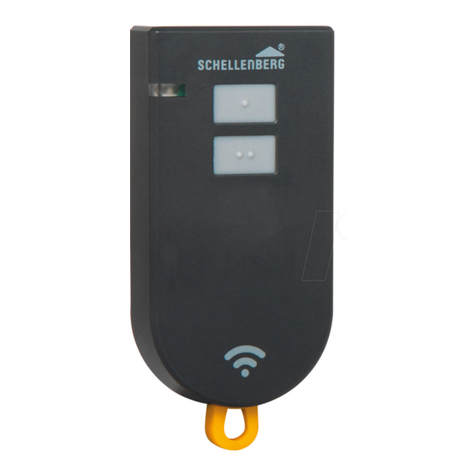
Schellenberg
Schellenberg SMART DRIVE 60930 manual

